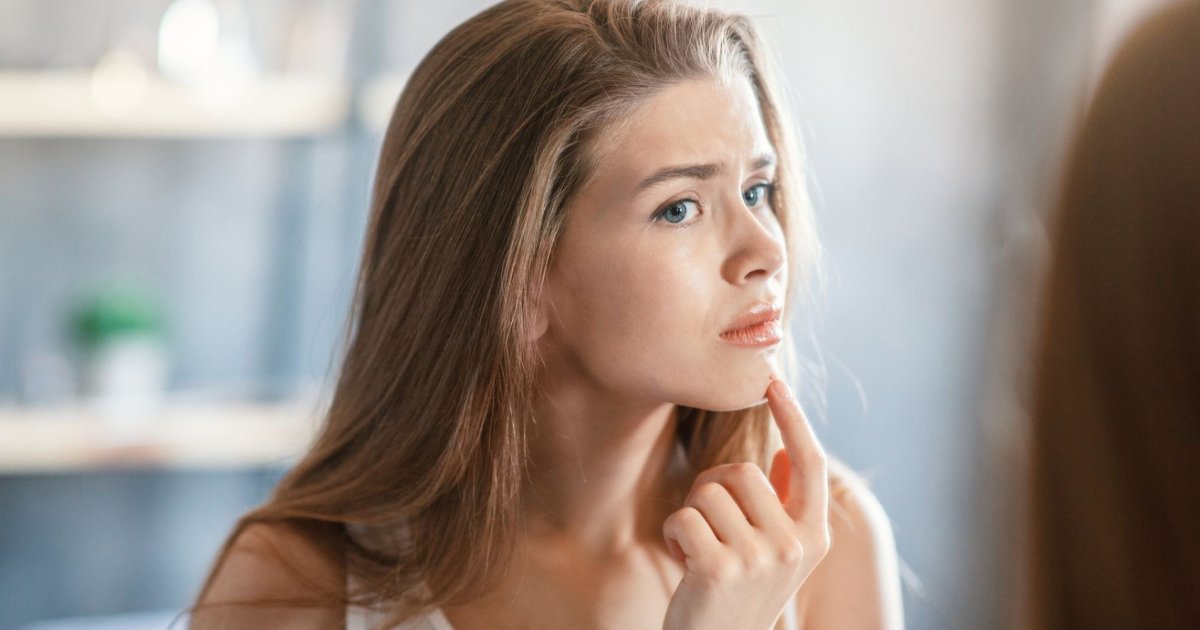THE pimples on the chin they can affect all women of any age and do not only occur during menstruation. These imperfections can actually have different origins that need to be defined as quickly as possible in order to treat them. Find out everything there is to know about chin pimples.
Why do we have pimples on our chin?
Unfortunately, acne does not stop during adolescence. Proof in numbers: according to the High Authority for Health, 12% of women in France between the ages of 25 and 58 suffer from it. This can result in blackheads, whiteheads, microcysts or papules present all over the face. However, pimples are most often found on the chin. And for good reason, in women, this area is more subject to hormonal changes. Also, the lower part of the face is an area that you touch a lot, which promotes the growth of bacteria.
Read also
These new anti-blemish treatments will make your pimples disappear
What causes pimples on the chin?
Pimples on the chin are in most cases associated with acne. Women sufferingacne after 25 years in fact, comedones appear in the U zone of the face, that is, at the level of the jaw and chin. These localized imperfections are associated with hormonal imbalance, and in particular with too high production of female hormones. These overstimulate the sebaceous glands, which leads to an overproduction of sebum and promotes the formation of acne. They can be pustules (bumps with a white head), papules (red bumps), cysts, nodules (red formations) or other lesions.
However, the appearance of pimples on the chin can also have other causes, for example:
- Perioral dermatitis.
- Skin allergies.
- Using cosmetics that are too abrasive: the skin defends itself and this leads to an overproduction of sebum.
- Improper skin care routine.
- Poor diet and especially eating foods high in fat or sugar.
- Stress (stress can trigger skin problems, including chin rashes).
- Change of season: for example, dry skin in winter can lead to the formation of spots due to the excessive production of sebum to compensate for the dryness.
This is why it is essential to consult a dermatologist to be able to definethe origin of pimples on the chinand find the right treatment for your skin type.
What treatment for chin pimples?
Again, treatment will depend on the cause of your pimples on your chinas well as the type of blackheads you suffer from.
If these are associated withadult acneA dermatologist will be able to prescribe an oral treatment for inflammation from the inside and reduce the overproduction of sebum. If the acne is milder, he may prescribe a spot treatment for the area (retinoid cream, benzoyl peroxide, topical antibiotics, azelaic acid gel or cream). Finally, depending on the skin condition found, other treatments such as laser treatment, wart treatment or the application of corticosteroid creams may be considered.
You will find many of them in the market stain removers, based on salicylic acid, AHA and BHA or even retinol. These can of course be included in your routine, but it is best to seek advice from a dermatologist first.
If your chin pimples are mainly related to your menstrual cycle, a topical anti-blemish treatment applied to the pimple during this period may be sufficient. These products for skin problems are available in pharmacies, drugstores or supermarkets, for all skin types.
What natural solutions for chin pimples?
If you prefer to treat your blemishes in a more natural way, start by eating a healthy and balanced diet. Especially since diet can help calm hormonal upheavals. There are even recommendations for foods you should eat to support female hormones, such as avocados, coconut oil, fatty fish or green vegetables. This will help you fight acne and blemishes.
You can also use tea tree essential oil to help clear the skin in this area and to make the pimple disappear. Apply topically to the pimple using a cotton swab and leave it on. Be careful, you have to do it at night and clean your face well the next day.
Some dietary supplements based on zinc or other active substances for fight acnecan also be used to regain smooth skin and say goodbye to facial skin problems.
Some good deeds can help you prevent the appearance of imperfections on the lower part of the face. Among which :
- Don’t touch your pimple and especially don’t prick it to prevent bacteria from multiplying on your skin and face.
- Adopt a proper skin care routine, especially if you have acne.
- Hydrate your skin well, especially in the transition to winter.
- Exfoliate your skin once a week with an enzymatic exfoliant or a very gentle scrub.
- Opt for non-comedogenic products and makeup (essential if you have acne).
- Avoid overly abrasive facial treatments.
If pimples and skin problems persist, be sure to consult a dermatologist to help you with skin care.
Read also
- How to get rid of heat rash?
- Pimples on the nose: how to get rid of them?

